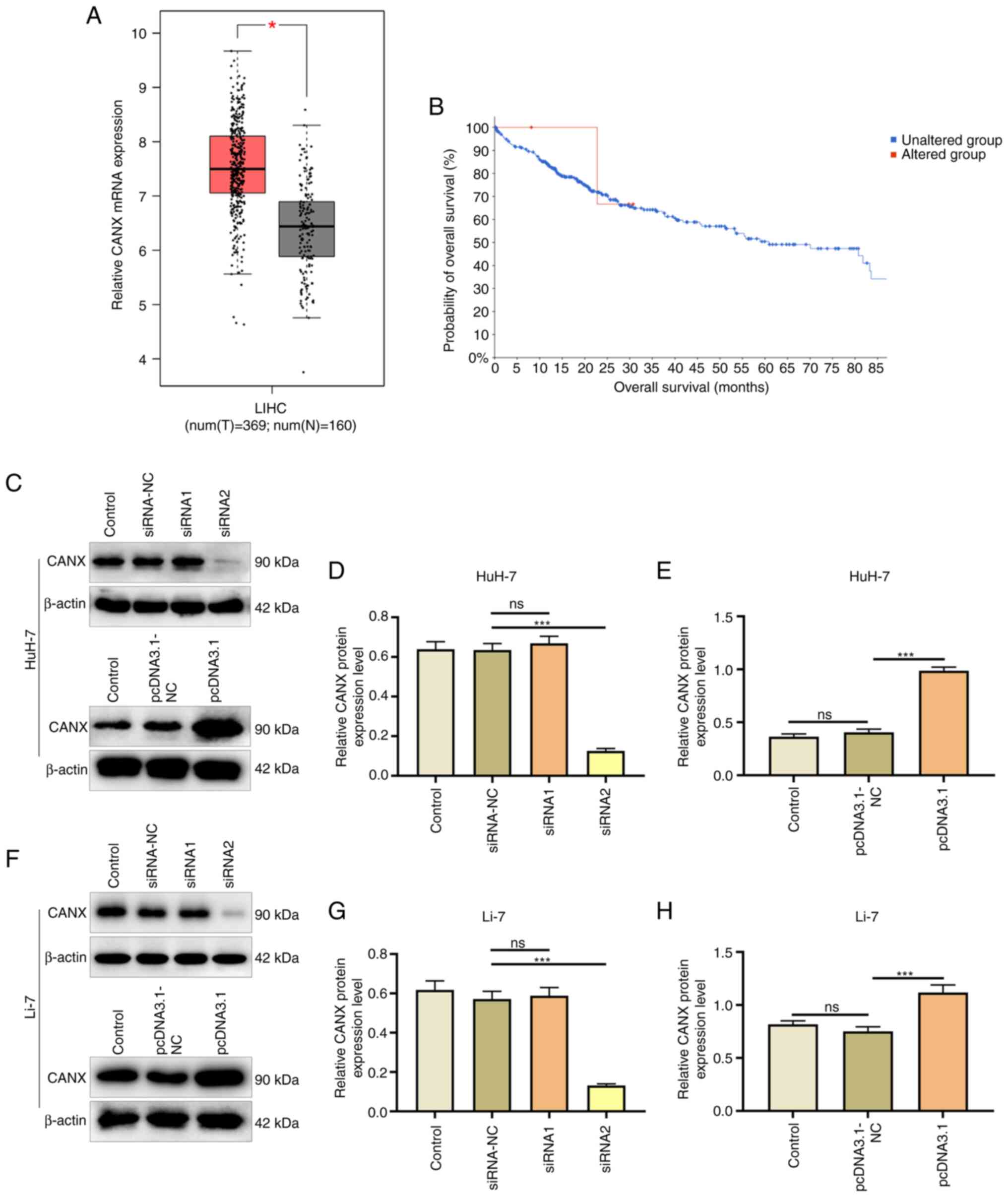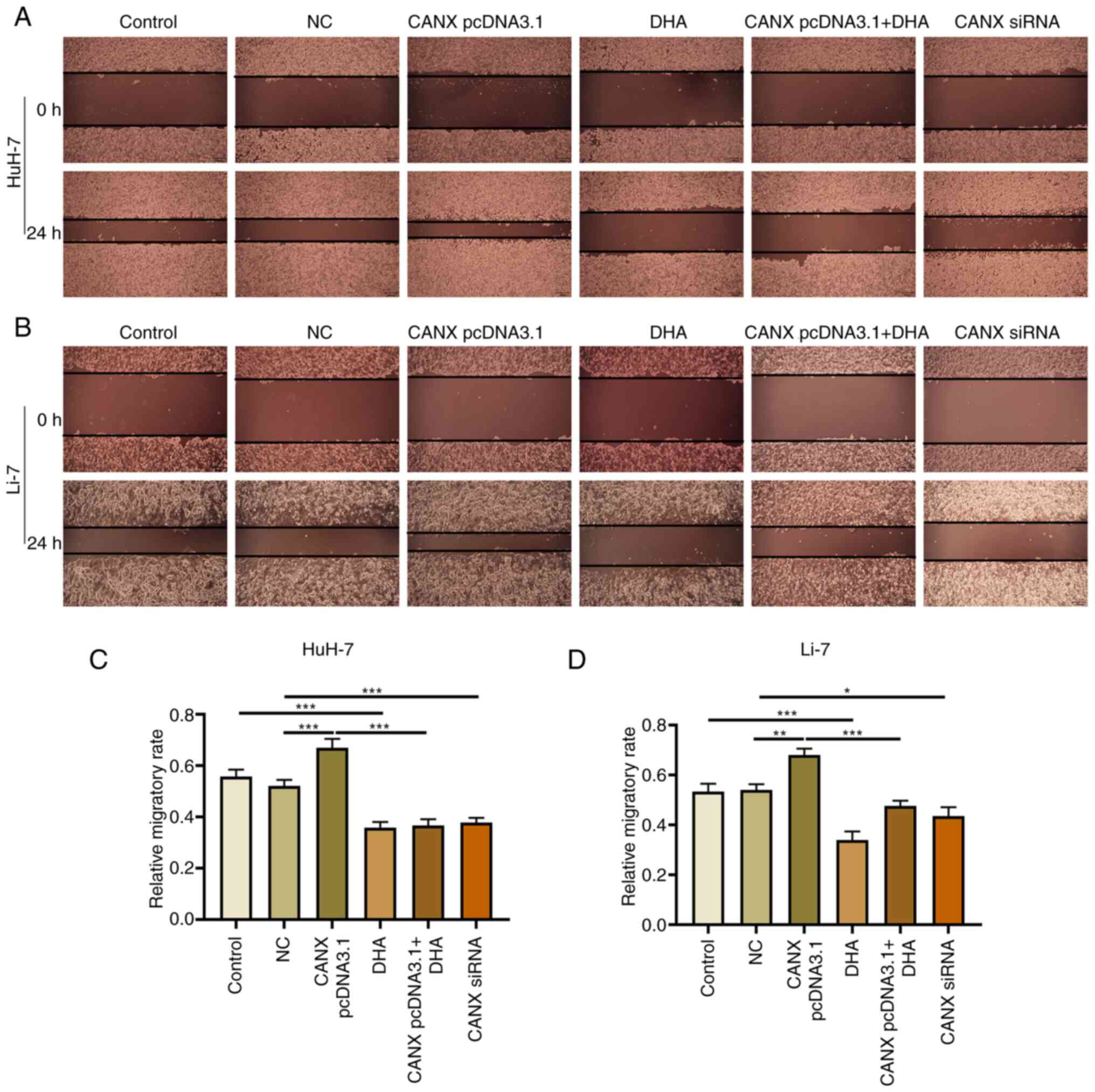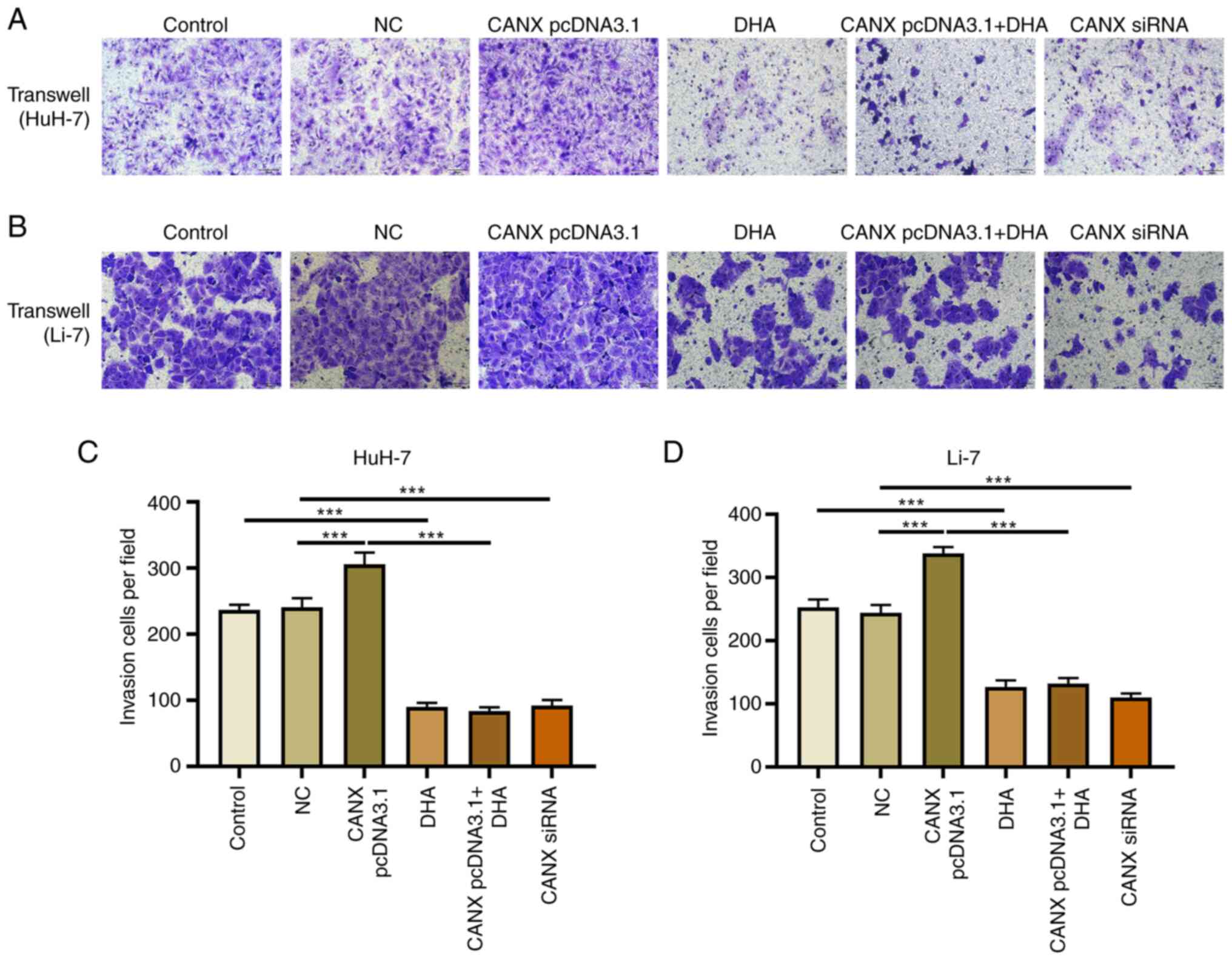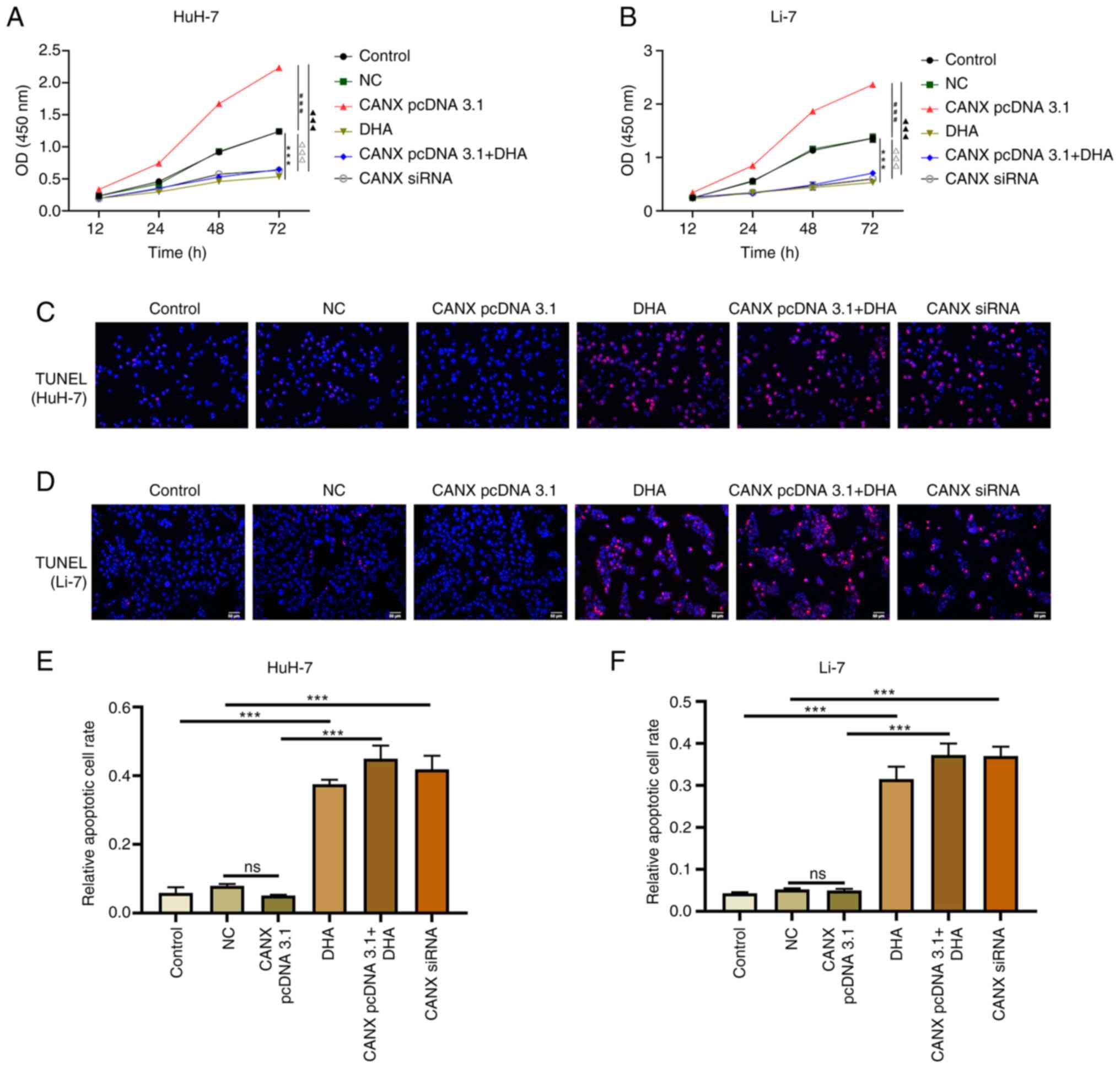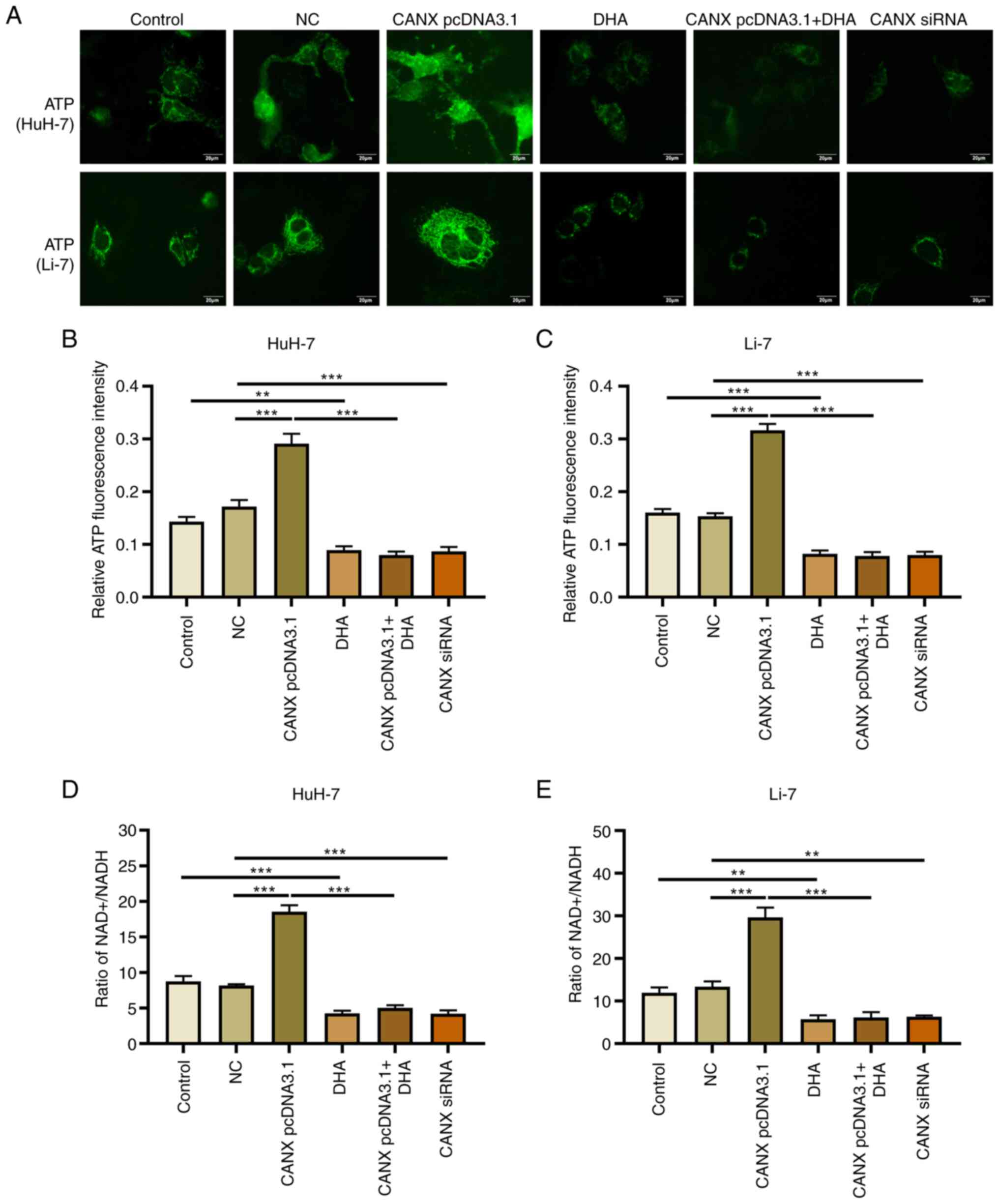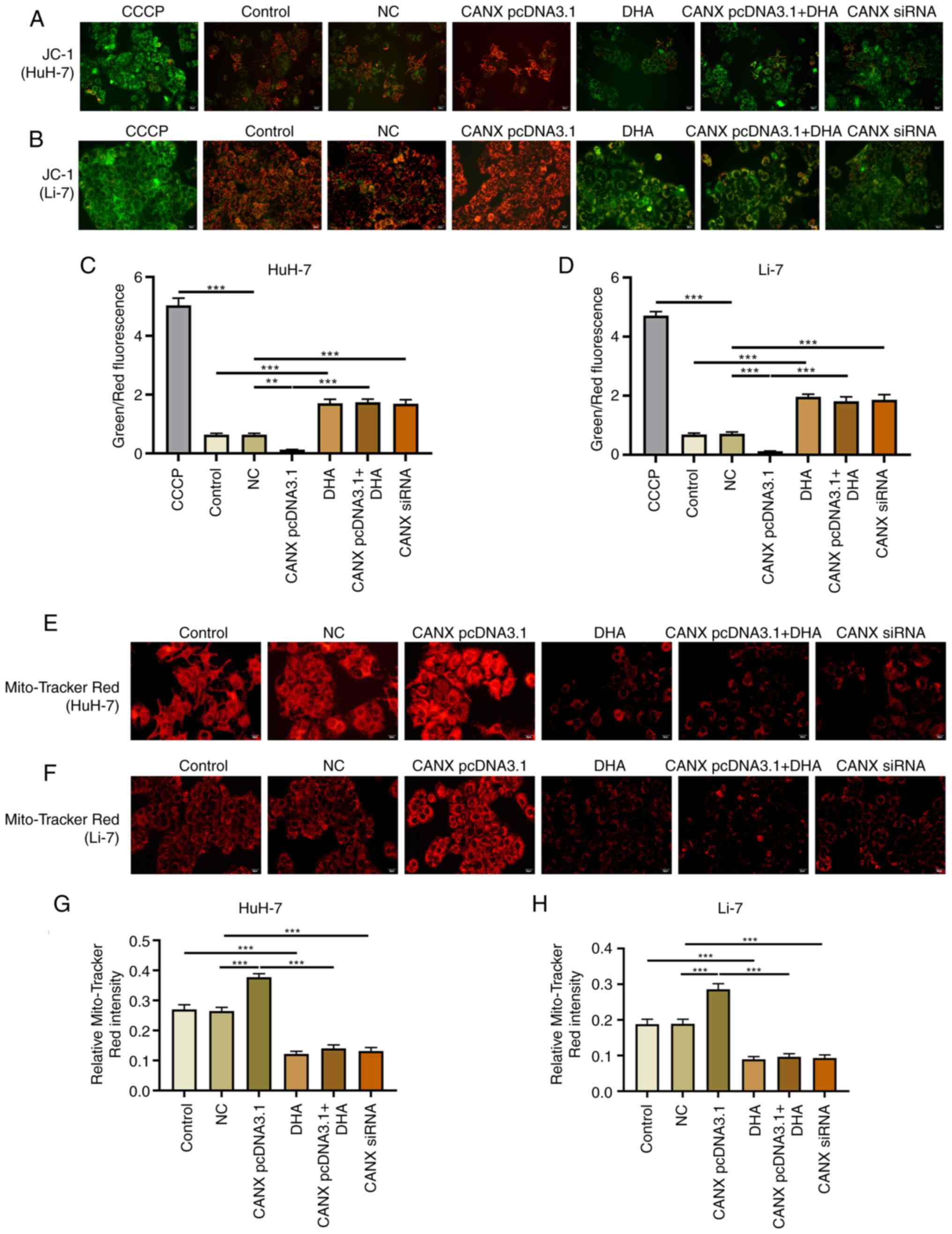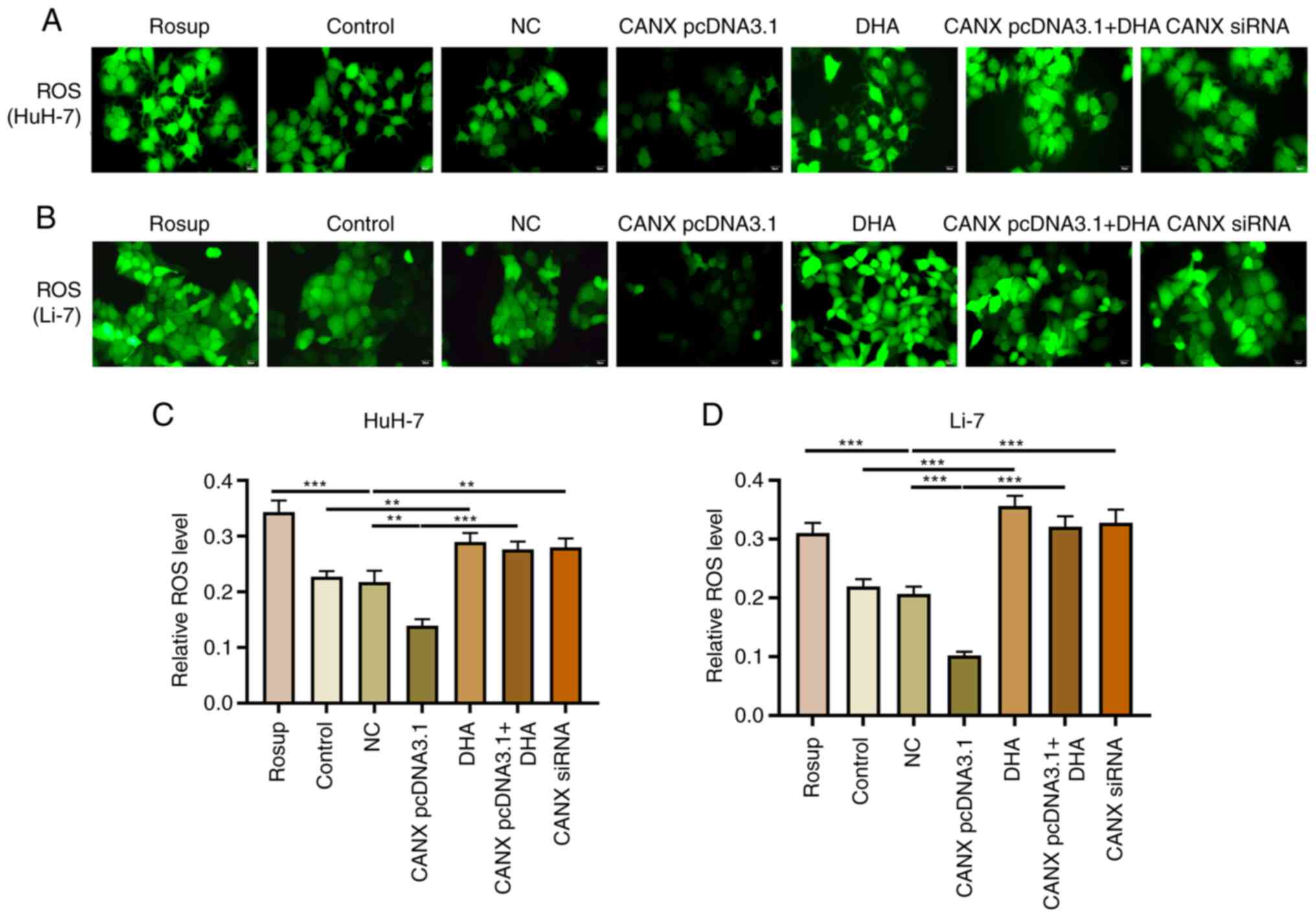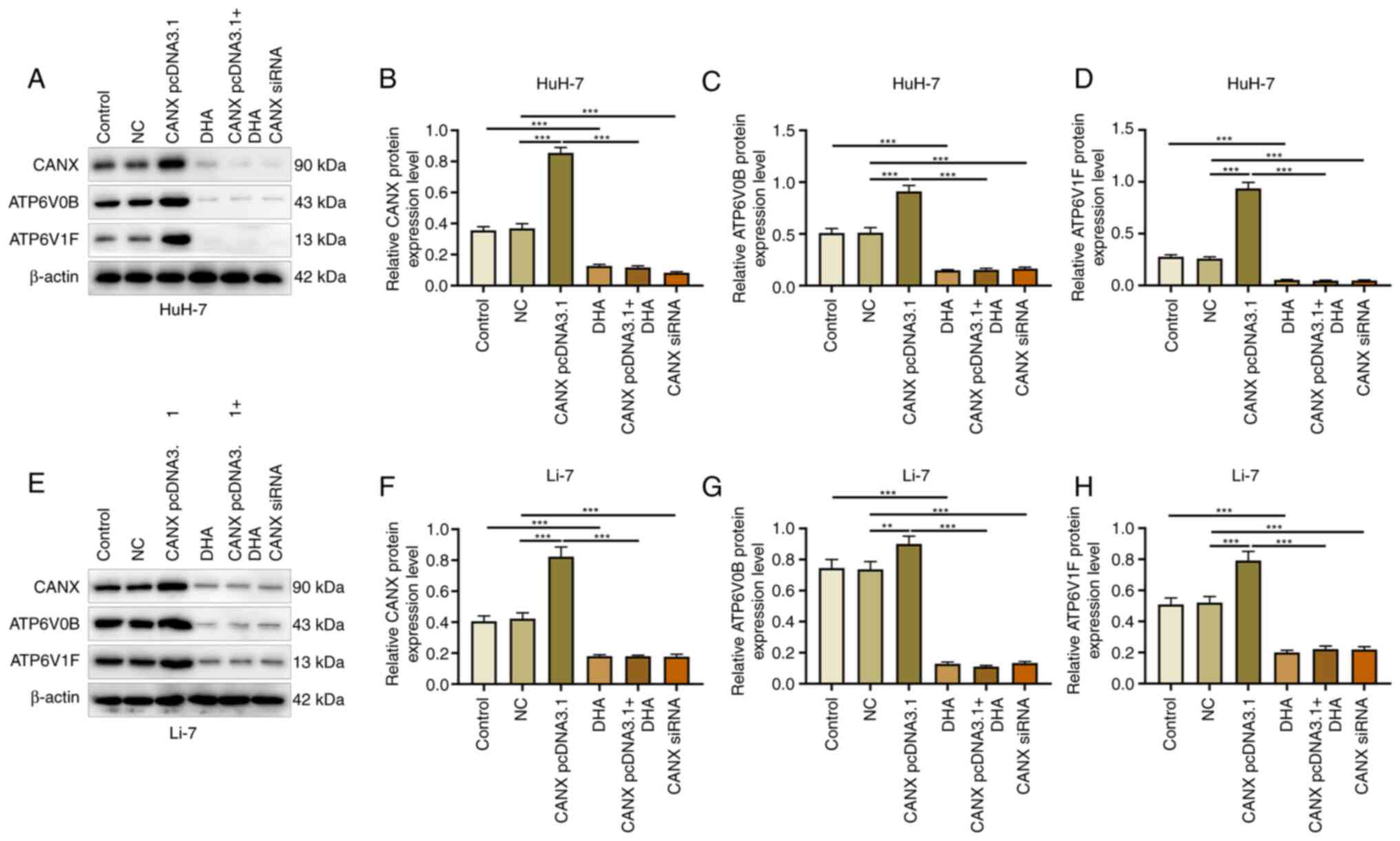|
1
|
Lu LC, Hsu CH, Hsu C and Cheng AL: Tumor
heterogeneity in hepatocellular carcinoma: Facing the challenges.
Liver Cancer. 5:128–138. 2016. View Article : Google Scholar : PubMed/NCBI
|
|
2
|
Kobayashi M, Nagashio R, Jiang SX, Saito
K, Tsuchiya B, Ryuge S, Katono K, Nakashima H, Fukuda E, Goshima N,
et al: Calnexin is a novel sero-diagnostic marker for lung cancer.
Lung Cancer. 90:342–345. 2015. View Article : Google Scholar : PubMed/NCBI
|
|
3
|
Ros M, Nguyen AT, Chia J, Le Tran S, Le
Guezennec X, Mcdowall R, Vakhrushev S, Clausen H, Humphries MJ,
Saltel F and Bard FA: ER-resident oxidoreductases are glycosylated
and trafficked to the cell surface to promote matrix degradation by
tumour cells. Nat Cell Biol. 22:1371–1381. 2020. View Article : Google Scholar : PubMed/NCBI
|
|
4
|
Garbincius JF and Elrod JW: Mitochondrial
calcium exchange in physiology and disease. Physiol Rev.
102:893–992. 2022. View Article : Google Scholar : PubMed/NCBI
|
|
5
|
Wang LT, Lin MH, Liu KY, Chiou SS, Wang
SN, Chai CY, Tseng LW, Chiou HC, Wang HC, Yokoyama KK, et al:
WLS/wntless is essential in controlling dendritic cell homeostasis
via a WNT signaling-independent mechanism. Autophagy. 17:4202–4217.
2021. View Article : Google Scholar : PubMed/NCBI
|
|
6
|
Zheng J, Yang T, Gao S, Cheng M, Shao Y,
Xi Y, Guo L, Zhang D, Gao W, Zhang G, et al: miR-148a-3p silences
the CANX/MHC-I pathway and impairs CD8(+) T cell-mediated immune
attack in colorectal cancer. FASEB J. 35:e217762021. View Article : Google Scholar : PubMed/NCBI
|
|
7
|
Lam STT and Lim CJ: Cancer biology of the
endoplasmic reticulum lectin chaperones calreticulin, calnexin and
PDIA3/ERp57. Prog Mol Subcell Biol. 59:181–196. 2021. View Article : Google Scholar : PubMed/NCBI
|
|
8
|
Marshansky V, Rubinstein JL and Grüber G:
Eukaryotic V-ATPase: Novel structural findings and functional
insights. Biochim Biophys Acta. 1837:857–879. 2014. View Article : Google Scholar : PubMed/NCBI
|
|
9
|
Li X, Li H, Yang C, Liu L, Deng S and Li
M: Comprehensive analysis of ATP6V1s family members in renal clear
cell carcinoma with prognostic values. Front Oncol. 10:5679702020.
View Article : Google Scholar : PubMed/NCBI
|
|
10
|
Hu X, Li D, Zhu H, Yu T, Xiong X and Xu X:
ATP6V1F is a novel prognostic biomarker and potential immunotherapy
target for hepatocellular carcinoma. BMC Med Genomics. 16:1882023.
View Article : Google Scholar : PubMed/NCBI
|
|
11
|
Chen Y, Teng L, Liu W, Cao Y, Ding D, Wang
W, Chen H, Li C and An R: Identification of biological targets of
therapeutic intervention for clear cell renal cell carcinoma based
on bioinformatics approach. Cancer Cell Int. 16:162016. View Article : Google Scholar : PubMed/NCBI
|
|
12
|
Shen S, Du M, Liu Q, Gao P, Wang J, Liu S
and Gu L: Development of GLUT1-targeting alkyl glucoside-modified
dihydroartemisinin liposomes for cancer therapy. Nanoscale.
12:21901–21912. 2020. View Article : Google Scholar : PubMed/NCBI
|
|
13
|
Chang J, Xin C and Wang Y and Wang Y:
Dihydroartemisinin inhibits liver cancer cell migration and
invasion by reducing ATP synthase production through CaMKK2/NCLX.
Oncol Lett. 26:5402023. View Article : Google Scholar : PubMed/NCBI
|
|
14
|
Luo Y, Ma J and Lu W: The significance of
mitochondrial dysfunction in cancer. Int J Mol Sci. 21:55982020.
View Article : Google Scholar : PubMed/NCBI
|
|
15
|
Peoples JN, Saraf A, Ghazal N, Pham TT and
Kwong JQ: Mitochondrial dysfunction and oxidative stress in heart
disease. Exp Mol Med. 51:1–13. 2019. View Article : Google Scholar : PubMed/NCBI
|
|
16
|
Kang SW, Lee S and Lee EK: ROS and energy
metabolism in cancer cells: Alliance for fast growth. Arch Pharm
Res. 38:338–345. 2015. View Article : Google Scholar : PubMed/NCBI
|
|
17
|
Im H, Baek HJ, Yang E, Kim K, Oh SK, Lee
JS, Kim H and Lee JM: ROS inhibits RORα degradation by decreasing
its arginine methylation in liver cancer. Cancer Sci. 114:187–200.
2023. View Article : Google Scholar : PubMed/NCBI
|
|
18
|
Brown D, Paunescu TG, Breton S and
Marshansky V: Regulation of the V-ATPase in kidney epithelial
cells: Dual role in acid-base homeostasis and vesicle trafficking.
J Exp Biol. 212:1762–1772. 2009. View Article : Google Scholar : PubMed/NCBI
|
|
19
|
Molinari M, Eriksson KK, Calanca V, Galli
C, Cresswell P, Michalak M and Helenius A: Contrasting functions of
calreticulin and calnexin in glycoprotein folding and ER quality
control. Mol Cell. 13:125–135. 2004. View Article : Google Scholar : PubMed/NCBI
|
|
20
|
Kozlov G and Gehring K: Calnexin cycle -
structural features of the ER chaperone system. FEBS J.
287:4322–4340. 2020. View Article : Google Scholar : PubMed/NCBI
|
|
21
|
Lüningschrör P, Andreska T, Veh A, Wolf D,
Giridhar NJ, Moradi M, Denzel A and Sendtner M: Calnexin controls
TrkB cell surface transport and ER-phagy in mouse cerebral cortex
development. Dev Cell. 58:1733–1747.e6. 2023. View Article : Google Scholar : PubMed/NCBI
|
|
22
|
Yi YC, Liang R, Chen XY, Fan HN, Chen M,
Zhang J and Zhu JS: Dihydroartemisinin suppresses the tumorigenesis
and cycle progression of colorectal cancer by targeting
CDK1/CCNB1/PLK1 signaling. Front Oncol. 11:7688792021. View Article : Google Scholar : PubMed/NCBI
|
|
23
|
Lim S, Ha Y, Lee B, Shin J and Rhim T:
Calnexin as a dual-role biomarker: Antibody-based diagnosis and
therapeutic targeting in lung cancer. BMB Rep. 57:155–160. 2024.
View Article : Google Scholar : PubMed/NCBI
|
|
24
|
Luo L, Li P, Xie Q, Wu Y, Qin F, Liao D,
Zeng K and Wang K: n6-methyladenosine-modified circular RNA family
with sequence similarity 126, member A affects cholesterol
synthesis and malignant progression of prostate cancer cells by
targeting microRNA-505-3p to mediate calnexin. J Cancer.
15:966–980. 2024. View Article : Google Scholar : PubMed/NCBI
|
|
25
|
Ruiz C, Alborelli I, Manzo M, Calgua B,
Keller EB, Vuaroqueaux V, Quagliata L, Rentsch CA, Spagnoli GC,
Diener PA, et al: Critical evaluation of transcripts and long
noncoding RNA expression levels in prostate cancer following
radical prostatectomy. Pathobiology. 90:400–408. 2023. View Article : Google Scholar : PubMed/NCBI
|
|
26
|
Pavlakis E, Neumann M, Merle N, Wieboldt
R, Wanzel M, Ponath V, Pogge Von Strandmann E, Elmshäuser S and
Stiewe T: Mutant p53-ENTPD5 control of the calnexin/calreticulin
cycle: A druggable target for inhibiting integrin-α5-driven
metastasis. J Exp Clin Cancer Res. 42:2032023. View Article : Google Scholar : PubMed/NCBI
|
|
27
|
Cheng J, Zhang G, Deng T, Liu Z, Zhang M,
Zhang P, Adeshakin FO, Niu X, Yan D, Wan X and Yu G: CD317
maintains proteostasis and cell survival in response to proteasome
inhibitors by targeting calnexin for RACK1-mediated autophagic
degradation. Cell Death Dis. 14:3332023. View Article : Google Scholar : PubMed/NCBI
|
|
28
|
Ryan D, Carberry S, Murphy ÁC, Lindner AU,
Fay J, Hector S, Mccawley N, Bacon O, Concannon CG, Kay EW, et al:
Calnexin, an ER stress-induced protein, is a prognostic marker and
potential therapeutic target in colorectal cancer. J Transl Med.
14:1962016. View Article : Google Scholar : PubMed/NCBI
|
|
29
|
Okayama A, Miyagi Y, Oshita F, Nishi M,
Nakamura Y, Nagashima Y, Akimoto K, Ryo A and Hirano H: Proteomic
analysis of proteins related to prognosis of lung adenocarcinoma. J
Proteome Res. 13:4686–4694. 2014. View Article : Google Scholar : PubMed/NCBI
|
|
30
|
Stahon KE, Bastian C, Griffith S, Kidd GJ,
Brunet S and Baltan S: Age-related changes in axonal and
mitochondrial ultrastructure and function in white matter. J
Neurosci. 36:9990–10001. 2016. View Article : Google Scholar : PubMed/NCBI
|
|
31
|
Gutiérrez T and Simmen T: Endoplasmic
reticulum chaperones tweak the mitochondrial calcium rheostat to
control metabolism and cell death. Cell Calcium. 70:64–75. 2018.
View Article : Google Scholar : PubMed/NCBI
|
|
32
|
Du C, Guo X, Qiu X, Jiang W, Wang X, An H,
Wang J, Luo Y, Du Q, Wang R, et al: Self-reinforced bimetallic
mito-jammer for Ca(2+) overload-mediated cascade mitochondrial
damage for cancer cuproptosis sensitization. Adv Sci (Weinh).
11:e23060312024. View Article : Google Scholar : PubMed/NCBI
|
|
33
|
Kim S, Ramalho TR and Haynes CM:
Regulation of proteostasis and innate immunity via
mitochondria-nuclear communication. J Cell Biol.
223:e2023100052024. View Article : Google Scholar : PubMed/NCBI
|
|
34
|
Radif Y, Ndiaye H, Kalantzi V, Jacobs R,
Hall A, Minogue S and Waugh MG: The endogenous subcellular
localisations of the long chain fatty acid-activating enzymes ACSL3
and ACSL4 in sarcoma and breast cancer cells. Mol Cell Biochem.
448:275–286. 2018. View Article : Google Scholar : PubMed/NCBI
|
|
35
|
Haugen ØP, Khuu C, Weidemann HM, Utheim TP
and Bergersen LH: Transcriptomic and functional studies reveal
miR-431-5p as a tumour suppressor in pancreatic ductal
adenocarcinoma cells. Gene. 822:1463462022. View Article : Google Scholar : PubMed/NCBI
|
|
36
|
Chen F, Kang R, Liu J and Tang D: The
V-ATPases in cancer and cell death. Cancer Gene Ther. 29:1529–1541.
2022. View Article : Google Scholar : PubMed/NCBI
|
|
37
|
Huang P, Xia L, Guo Q, Huang C, Wang Z,
Huang Y, Qin S, Leng W and Li D: Genome-wide association studies
identify miRNA-194 as a prognostic biomarker for gastrointestinal
cancer by targeting ATP6V1F, PPP1R14B, BTF3L4 and SLC7A5. Front
Oncol. 12:10255942022. View Article : Google Scholar : PubMed/NCBI
|
|
38
|
Singh J, Meena A and Luqman S: New
frontiers in the design and discovery of therapeutics that target
calcium ion signaling: A novel approach in the fight against
cancer. Expert Opin Drug Discov. 18:1379–1392. 2023. View Article : Google Scholar : PubMed/NCBI
|
|
39
|
Kannurpatti SS: Mitochondrial calcium
homeostasis: Implications for neurovascular and neurometabolic
coupling. J Cereb Blood Flow Metab. 37:381–395. 2017. View Article : Google Scholar : PubMed/NCBI
|
|
40
|
De Marchi U, Santo-Domingo J, Castelbou C,
Sekler I, Wiederkehr A and Demaurex N: NCLX protein, but not LETM1,
mediates mitochondrial Ca2+ extrusion, thereby limiting
Ca2+-induced NAD(P)H production and modulating matrix redox state.
J Biol Chem. 289:20377–20385. 2014. View Article : Google Scholar : PubMed/NCBI
|
|
41
|
Ma Y, Zhang P, Zhang Q, Wang X, Miao Q,
Lyu X, Cui B and Ma H: Dihydroartemisinin suppresses proliferation,
migration, the Wnt/β-catenin pathway and EMT via TNKS in gastric
cancer. Oncol Lett. 22:6882021. View Article : Google Scholar : PubMed/NCBI
|
|
42
|
Wang X, Guo P, Tian J, Li J, Yan N, Zhao X
and Ma Y: LncRNA GAS5 participates in childhood pneumonia by
inhibiting cell apoptosis and promoting SHIP-1 expression via
downregulating miR-155. BMC Pulm Med. 21:3622021. View Article : Google Scholar : PubMed/NCBI
|



